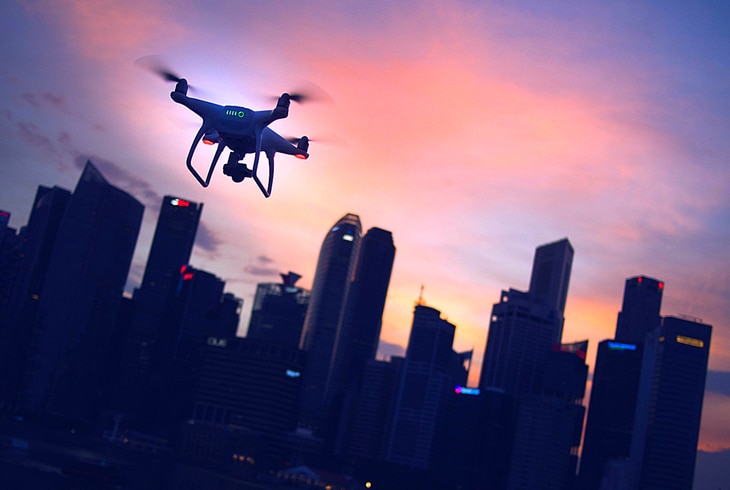Tomorrow’s Top Five Security Trends
Technology is the driving force behind the megatrends impacting the physical security landscape this year. And while it comes with challenges, it also opens up opportunities for security providers to introduce ground-breaking product offerings for both consumer and business markets.
Here we look at five of the top trends shaping the security industry.
- Prioritising risk management
A greater focus on risk management is a standout trend of 2018, says Daniel Lewkovitz, CEO of Calamity Monitoring, which installs and monitors electronic security and life-safety systems.
“Ten years ago security providers would have a hard time convincing even risk-prone organisations to manage threats such as terrorism, mass casualty or evacuation (beyond basic and often token fire safety plans),” says Lewkovitz.
“Today, we find companies are getting on the front foot with managing their internal and external security in electronic, manpower and procedural security. This is over and above growing attention to cybersecurity. To be clear, none of these are new threats by any means. What’s changed is the level of attention they are now afforded.
“When a CBD coffee shop can become the scene of a major terror incident, it caused a lot of people in traditionally quiet environments to sit up and take notice. Business owners can no longer say they didn’t think it might happen to them.”
This trend presents an opportunity for security providers to innovate in the risk management space and to work with clients to develop proactive and predictive risk management strategies.
- The growth of the Internet of Things
The Internet of Things (IoT) continues to grow exponentially across all markets. And while some are calling it the next industrial revolution, as the IoT becomes more interconnected with the physical world, security vulnerabilities will continue to increase.
A recent survey by technological researcher CEB found almost 20 percent of organisations have already experienced one or more IoT related security breaches. While global researcher IDC predicts this will climb to more than 60 percent by the end of 2018.
Blockchain, Public Key Infrastructure (PKI), IoT analytics, IoT authentication and IoT network security are enabling businesses to more comfortably embrace connected devices by managing the associated risk.
- Harnessing the power of social media
Physical security professionals, law enforcement and emergency management personnel are leveraging social media to identify security threats and prevent crime.
Emerging applications are making it possible to predict when crimes such as stalking, thefts and assaults might take place by analysing keywords and phrases in geotagged social media posts.
Facebook’s Safety Check feature is also gaining momentum. The tool enables people to connect with loved ones during a crisis to let them know they’re safe and give or find help. Facebook’s Crisis Response centre also provides real-time information about a given disaster and streams video coming from scenes.
We can expect to see social media continue to evolve to allow for improved crises responses and proactive insights for people who may need to be evacuated or take shelter.
- Realising the value of Big Data
Data is growing exponentially. By 2020, it’s predicted there’ll be approximately 1.7 megabytes of new information generated per second for every human being. Provided it’s mined correctly and quickly, Big Data can provide valuable real-time insights into physical and cyber security threats.
“There’s emerging technology that allows for artificial intelligence to look at crowd movements, and the dynamics of crowds in busy spaces, to predict where help is likely to be required,” says Lewkovitz.
“You can predict where trouble is likely to occur and get people there in case it happens, rather than waiting for it to happen. For example, a real-time, network-based neighbourhood watch, where an intrusion at one premise results in nearby premises being notified and potentially having their security increased in real time.”
To optimise the value of Big Data, security providers must consider how to make the data smart and targeted to clients and how to assess its risk.
- Drones continue to rule
The commercial use of drones has exploded in the last few years, and recent research by Global Market Insights Inc predicts the commercial drone market will reach USD 17 billion by 2024.
They’re being used to watch prisons, universities, stadiums and other public spaces, and to assess damage and find people in need of help in emergency situations.
But while there are clear benefits of using drones for security, they come with their fair share of challenges such as the risk of data theft, loss of control and collisions.
“The technology is probably advancing faster than legislation and safety controls can keep up,” says Lewkovitz. “I think people are very unsure or even nervous about whether flying patrol vehicles are going to eventually be banned or become so tightly wound up in red tape they become non-viable.”
To learn more about the latest trends and see tomorrow’s technology shaping the security industry, head to securityexpo.com.au
Written by Kate Jeremiah
-
Bring your security needs into focus
- Register

